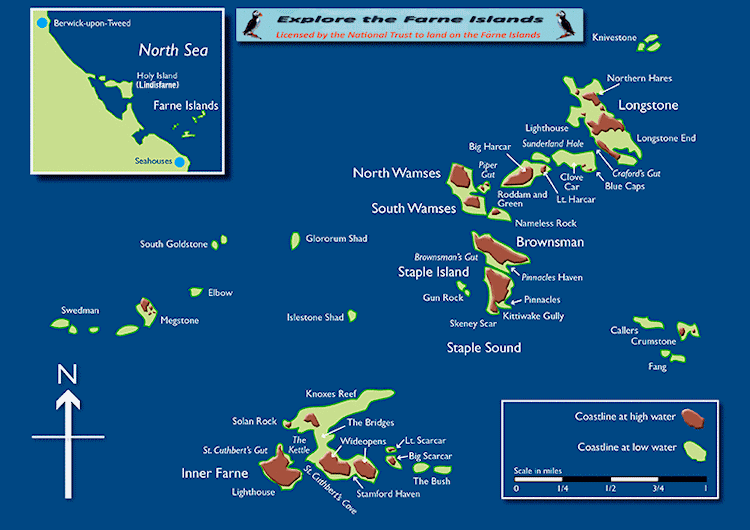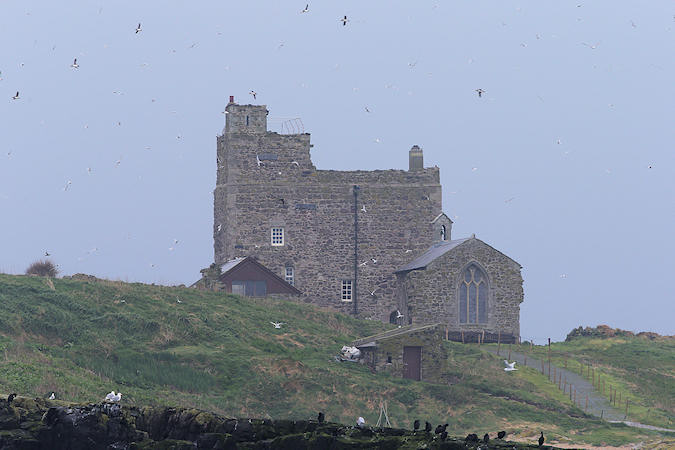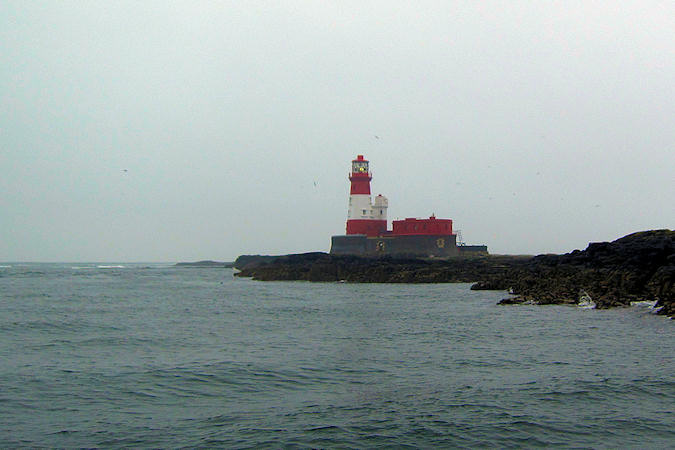United Kingdom
Things to DO
Farne Islands

The Farne Islands are a group of islands off the coast of Northumberland, England. There are between
15 and 20 islands depending on the state of the tide. They are scattered about 2.5–7.5 km from the mainland,
divided into two groups, the Inner Group and the Outer Group.
The main islands in the Inner Group are Inner Farne, Knoxes Reef and the East and West Wideopens (all
joined together on very low tides) and (somewhat separated) the Megstone; the main islands in the Outer Group
are Staple Island, the Brownsman, North and South Wamses, Big Harcar and the Longstone. The two groups are
separated by Staple Sound.
The highest point, on Inner Farne, is 19 metres above mean sea level.
Seahouses
 |
|||||
Seahouses is a large village on the North Northumberland coast in England. It is about 20 km north
of Alnwick, within the Northumberland Coast Area.
Seahouses attracts many visitors, visiting the Northumberland National Park, Northumberland Coast and the
Farne Islands.
Seahouses also has a working fishing port, which also serves the tourist trade, being the embarkation point
for visits to the Farne Islands.
From shops in the town and booths along the harbour, several boat companies operate, offering various
packages which may include a landing on at least one Farne Island, seeing seals and seabirds, and hearing a
commentary on the islands
Farne Islands
 |
|||||
The earliest recorded inhabitants of the Farne Islands were various Culdees, members of
Christian asceticand hermitic communities
In the year 678 Inner Farne was home to St Cuthbert. After 12 years as Prior of Lindisfarne,
St.Cuthbert retired to Inner Farne until he became Bishop of Lindisfarne in 684.
He returned to Inner Farne when his health deteriorated and died there on 20th March 687.
Among other acts, Saint Cuthbert introduced special laws in 676 protecting the Eider ducks, and other
seabirds nesting on the islands; these are thought to be the earliest bird protection laws anywhere in the
world.
Nowedays the islands have no permanent population, the only residents being the National Trust Rangers
who live there for 9 months of the year to look after the Island and its' wildlife: they live in the old
Pele Tower on the Inner Farne, and the Lighthouse Cottage on the Brownsman in the outer group.
 |
|||||
A cottage beside the Pele Tower now houses a Visitor Centre.
The Pele Tower was founded by Thomas Castell, Prior of Durham. it was built in 1494 to 1519 to
house the monks who lived on the island.
From 1559 to 1637 the tower was garrisoned, when used as a coastal fortification and from 1673, the tower acted
as a lighthouse, when King Charles II, granted a license to erect a beacon.
A church was built on the island in 1370 dedicated to St Cuthbert
After major alterations undertaken in 1884 - only parts of the walls & a window in the south wall survive
from the earlier building - it is open to the public today.
In 1848 a memorial stone to Grace Darling, bearing an inscription composed by Wordsworth was placed
insite the chapel.
 |
|||||
Grace Darling was the daughter of Longstone lighthouse-keeper, William Darling, and on
September 7, 1838, at the age of 22 years, she and her father rescued nine people in a strong gale and thick
fog from the wreck of the Forfarshire, which had run aground on Harker rock. The story of
the rescue attracted extraordinary attention throughout Britain and made Grace Darling a heroine
In 1811 the present Farne Lighthouse was built. Designed by Daniel Alexander, it is a squat,
compact station, with a circular white tower 13 metres in height. Farne Lighthouse was modernised and
converted to solar powered operation in late 1996.
Longstone Lighthouse was built and designed by Joseph Nelson in 1826, and was originally called the
Outer Farne lighthouse.
 |
|||||
The islands being in the care of the National Trust are a very popular destination for lovers of
wildlife, for nowhere in the British Isles are such a variety of seabirds to be seen in such a small area.
These birds include Puffins, Guillemots, Razorbills, Sandwich Terns, Common Terns, Roseate Terns, Arctic Terns,
Shags, Cormorants and Eider Ducks.
Another notable resident of the Farne Islands is the Atlantic Grey Seal, with between 3.000 and 4.000
of this rare species on and around the islands.
The colonies here are one of the most important in Europe, and this species of seal is the largest surviving
carnivore in the British Isles and resides throughout the year, with the 1.000 or so pups being born each year
in late October and November